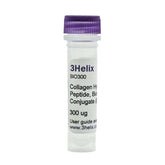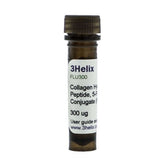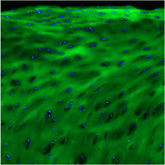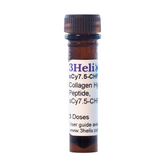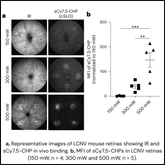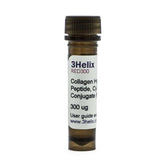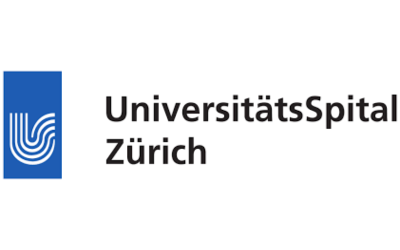Visualizing Mast Cell-Driven Collagen Damage in nAMD Progression
Age-related macular degeneration (AMD), particularly wet AMD (nAMD), presents a significant challenge to ophthalmology research. nAMD is characterized by choroidal neovascularization (CNV) and subsequent vision loss. Recent research has identified mast cells as critical mediators in nAMD pathogenesis, highlighting their role in both pro-angiogenic signaling and extracellular matrix (ECM) remodeling. This discovery offers novel therapeutic avenues and underscores the importance of advanced tools such as Collagen Hybridizing Peptides (CHPs) to uncover the underlying mechanisms.
The study, “Mast cells promote choroidal neovascularization in a model of age-related macular degeneration”, looks closely at the accumulation and activation of mast cells within the choroid of nAMD patients. Mast cells contribute to CNV through the release of pro-angiogenic factors, and by orchestrating ECM remodeling. The research data indicate a direct correlation between mast cell presence and CNV extent, establishing these cells as active participants in nAMD’s pathophysiology. This dual role suggests that mast cell activity is a significant driver of disease progression, beyond what was previously understood.
To rigorously investigate the role of mast cells in CNV, the researchers employed a multifaceted experimental strategy. First, a laser-induced CNV mouse model was utilized to stimulate the pathological angiogenesis characteristic of nAMD allowing for controlled induction and observation of choroidal neovascularization. Using mice genetically engineered to lack mast cells provided a direct comparative analysis to assess the necessity of these cells in CNV progression. Pharmacological inhibition with ketotifen fumarate, a mast cell stabilizer, further validated the impact of mast cell activity on CNV development. Complementing these in vivo studies, in vitro studies using choroidal endothelial cells and tissue explants were performed to analyze the direct cellular and molecular mechanisms of mast cell-mediated angiogenesis and ECM remodeling.
Continue Reading

“Compared to wild-type animals, CHP binding on day 7 post-laser burn to eyes was decreased in KitW−sh/W−sh mice and restored by mast cell reconstitution (Fig. 4D, E), indicative of a pivotal role for mast cells in collagen remodeling.”
Critically, Collagen Hybridizing Peptides (CHPs) were used to quantify and visualize the extent of collagen denaturation within the ECM, providing a direct measure of mast cell-driven ECM remodeling. This technique allowed researchers to specifically detect a key component of structural changes associated with CNV, offering a unique perspective on the impact of mast cell activity on tissue integrity.
Key Findings Include:
- Significant reduction in VNC lesion size in mast cell-deficient mice
- Direct pro-angiogenic effects of tryptase on choroidal endothelial cells
- Quantifiable collagen degradation visualized by CHP binding, correlating to mast cell presence
- Transcriptomic analysis confirming mast cell actication correlates with ECM remodeling.
Identifying mast cells as key contributors to nAMD presents new opportunities for therapeutic interventions. Current anti-VEGF therapies, while effective, do not address the full spectrum of disease mechanisms. Targeting mast cell activity, either directly or through inhibition of factors like tryptase, may offer improved outcomes for patients with limited response to existing treatments.
The ability of CHPs to specifically bind to denatured collagen provides a unique advantage in studying the ECM’s role in nAMD progression and evaluating the efficacy of novel therapies. We encourage researchers in ophthalmology and related fields to explore the capabilities of CHPs in their investigations.
|
Dabouz, Rabah, et al. "Mast cells promote choroidal neovascularization in a model of age-related macular degeneration." Journal of Neuroinflammation 21.1 (2024): 247.
|
|
